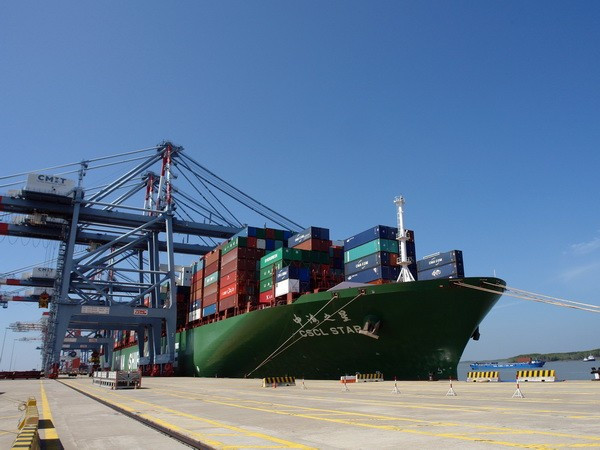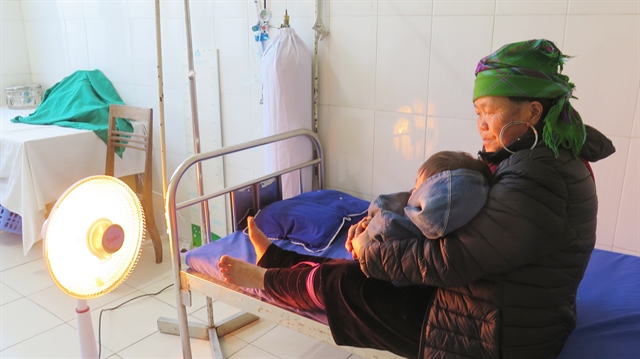 Society
Society

Enhancing regional connectivity is key to fulfilling the tourism potential of the Central Highlands, according to the Government’s master plan on tourism development for the period through 2020.
 |
| Tourists visit the Tuyền Lâm Lake in Đà Lạt City in the Central Highlands province of Lâm Đồng. The area has great potential to offer unique tourism experiences. — VNA/VNS Photo Phạm Kha |
HCM CITY – Enhancing regional connectivity is key to fulfilling the tourism potential of the Central Highlands, according to the Government’s master plan on tourism development for the period through 2020.
Though the plan envisions connecting localities in the region and creating unique tourism products, the tourism sector has not achieved any significant breakthroughs so far.
Trần Hùng Việt, general director of Saigontourist, said it was necessary to have a thorough master planning and plans on regional connectivity, thus creating synergies to fulfill the tourism potential and boost investment.
Nguyễn Thị Bích Ngọc, deputy director of the Lâm Đồng Province Department of Culture, Sports and Tourism, said provinces in the Central Highlands found it difficult to create distinctive products since they had so much in common.
“The Central Highlands should create a clear tourism brand before its provinces create their own brands and determine their products.”
After making comprehensive plans for the Central Highlands and its localities, relevant authorities should collaborate with travel agencies to take the products to potential tourists, she said.
Travel agencies have been reluctant to make use of existing products, she said.
Lê Hoàng Cơ, director of Đam San Company in Đắk Lắk Province’s Buôn Ma Thuột City, said though provinces have worked together, they have not managed to get their agencies to execute plans.
Potential
The Central Highlands has great potential for tourism, with its spectacular waterfalls, forests, mountains, ethnic groups with rich culture, and others.
Some popular destinations include Lung Leng Archaeological Site, Ngọc Linh Mountain, Yali Waterfalls, Măng Đen Ecotourism Site, Chư Mom Ray National Park in Kon Tum Province; Chư Đăng Ya Volcanic Mountain, Kon Chư Răng Nature Reserve in Gia Lai Province; and Lắc Pond, Draynur Waterfalls, Yok Đôn National Park in Đắk Lắk Province.
The Central Highlands is also known for its gong culture, which was recognised by UNESCO in 2005 as a Masterpiece of the Intangible Cultural Heritage of Humanity.
In fact, each province in the area has some distinctive attractions that can be used to boost tourism.
While Lâm Đồng Province is blessed with cool weather, green nature and some intangible values, Gia Lai Province has many interesting cultural stories and literary gems related to Stơr Village, Núp Hero, and others during the wartime.
ĐắK Nông Province has immense cultural variety in the form of some 40 minor ethnic groups.
Limitations
Lâm Đồng Province tops the region’s tourism sector with 59 travel and transport agencies and 18,689 rooms.
Between 2011 and 2015 it received 20 million tourists, one million of whom were foreigners.
Last year there were 5.9 million visitors, an 8.7 per cent year-on-year increase.
Nguyễn Thị Bích Ngọc, deputy director of the province Department of Culture, Sports, and Tourism, said Lâm Đồng planned to carry out further studies to maximise its tourism potential and create new attractions.
Gia Lai Province attracted 500,000 visitors in 2017 and earned revenues of VNĐ245 billion from tourism.
Đắk Lắk Province’s tourism sector received investment of nearly VNĐ3 trillion between 2012 and 2017, and 703,000 visitors arrived last year, spending VNĐ610 billion.
According to Phan Văn Hoàng, deputy director of the Kon Tum Province Department of Culture, Sports, and Tourism, most attractions in the province are too basic to sustain tourists’ interest.
“This explains why the number of visitors to Kon Tum Province remains low.”
He added that the province only had eight travel agencies, most of them small.
Phạm Tâm Thanh, deputy director of the Đắk Lắk Province Department of Culture, Sports and Tourism, said the Central Highlands had not fulfilled its tourism potential.
He blamed it on a lack of resources, poor implementation of investment procedures, and unfavourable land policies had brought challenges to the tourism growth.
Hydropower projects on the Sêrêpốc and Krông Bông Rivers had marred some landscapes and national monuments while lack of skilled manpower was another drawback, he said.
He also blamed the lack of connectivity between tourism attractions in different provinces, saying authorities’ failure to carry out agreements aimed at improving connectivity had worsened the situation.
Solutions
Con đường xanh Tây Nguyên (the Central Highlands green road), a tourism path linked to Con đường di sản miền Trung (The Cental Heritage Road), is among the important projects envisaged by the Việt Nam National Administration of Tourism.
Một ngày ăn cơm ba nước, ba quốc gia một điểm đến (Dining in three countries in one day, three countries one destination) is a project aimed at linking attractions in Laos, Cambodia and Thailand.
In fact, in 2010, 2013 and 2015 the Việt Nam National Administration of Tourism organised some farm trips along the tourism path for travel agencies.
However, with no linkage mechanism or leading agency, the tourism path was not a big success and has failed to stimulate tourism growth in the central highlands region.
“We are delighted to see that the Ministry of Culture, Sports, and Tourism has promoted the signing of a tourism development agreement in the region,” Tôn Thị Ngọc Hạnh, deputy chairwoman of the Đắk Nông Province People’s Committee, said.
“However, nothing has been done after the signing.”
"Đắk Nông is always willing to take part in any tourism activity," she assured.
She suggested that since Gia Lai, Đắk Lắk, and Lâm Đồng provinces have their own airports and Đắk Nông is close to HCM City, tourists should visit the three provinces before heading to National Highway 14 or 28 to Đắk Nông and returning to HCM City.
Thanh said a point person is necessary to co-ordinate and speak in a common voice on behalf of the various localities to promote the region’s tourism.
On top of each province’s efforts, the Government should draw up favourable policies to attract investment to and upgrade infrastructure in the region, he said.
With regards to Con đường xanh Tây Nguyên, the Việt Nam National Administration of Tourism should come up with a comprehensive master plan and guidelines for localities to create their own tourism products, he said.
The ministry should create a distinct brand for Central Highlands tourism based on the gong culture, he added. – VNS




